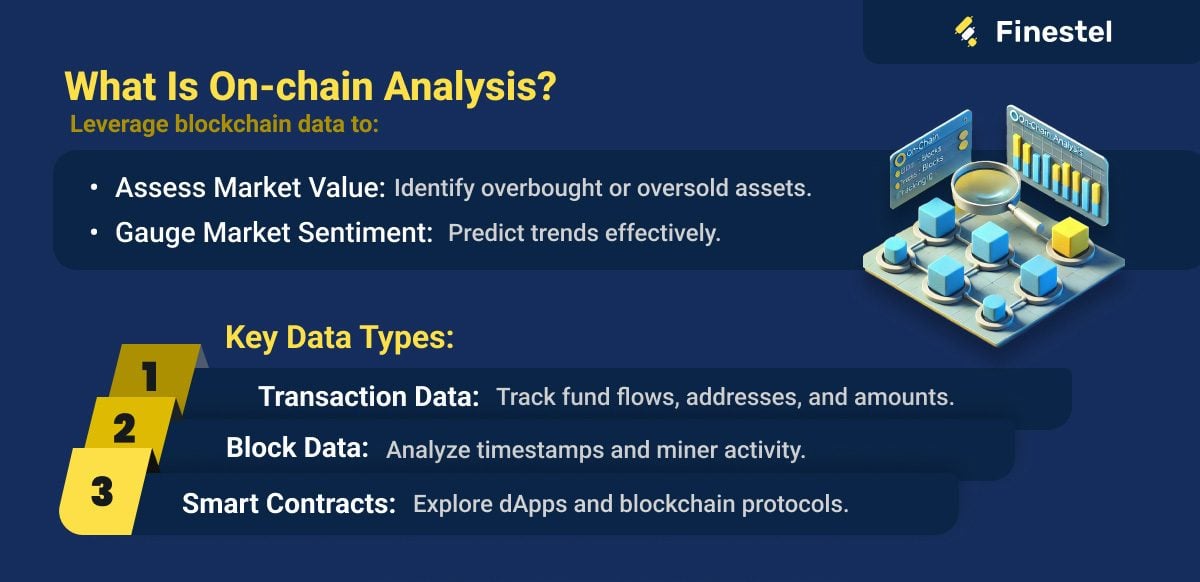Southeast Insights
Your go-to source for news and information from the vibrant heart of Shenyang.
On-Chain Transaction Analysis: Spilling the Beans on Blockchain Behavior
Unlock the secrets of blockchain behavior! Dive into on-chain transaction analysis to uncover hidden patterns and insights.
Understanding On-Chain Transaction Patterns: A Deep Dive into Blockchain Behavior
Understanding on-chain transaction patterns is crucial for anyone looking to delve deeper into blockchain behavior. Analyzing these patterns can shed light on user activities, especially in decentralized finance (DeFi) and non-fungible tokens (NFTs). By examining transaction history, trends can be identified, such as the frequency of transactions, notable wallet interactions, and overall network activity. This data can reveal how different users and entities interact with the blockchain, providing insights that can influence trading strategies and investment decisions.
Moreover, recognizing on-chain transaction patterns enables participants in the blockchain ecosystem to detect anomalies and potential issues. For instance, if a particular address shows unusually high transaction volumes, it could indicate either a market trend or potentially suspicious behavior, such as wash trading or manipulation. Understanding these behaviors not only helps investors make informed decisions but also aids developers and researchers in strengthening blockchain security and integrity through better monitoring of transactional activities.

Counter-Strike is a popular first-person shooter game that has become a staple in competitive gaming. Players can engage in tactical team-based matches, choosing to play as either terrorists or counter-terrorists. For those interested in enhancing their gaming experience, using a bc.game promo code can bring exciting rewards and bonuses.
How On-Chain Analysis Can Uncover Fraudulent Activity
On-chain analysis plays a pivotal role in identifying and mitigating fraudulent activities within blockchain networks. By examining the transaction history and patterns recorded on the blockchain, analysts can trace illicit activities back to their origins. This process often involves the use of advanced algorithms and data visualization tools to illustrate movement patterns of cryptocurrencies, allowing for a clearer understanding of how assets are transferred between wallets. With the increasing sophistication of fraudsters, on-chain analysis provides an essential mechanism for recognizing anomalies that could indicate fraudulent intent.
Additionally, on-chain analysis can enhance transparency and accountability within the cryptocurrency ecosystem. Public blockchains allow anyone to view transaction data, and by leveraging this accessibility, analysts can monitor large transactions, sharing patterns, and wallet interactions. Such scrutiny makes it difficult for fraudulent schemes to go unnoticed, as significant discrepancies or unusual activity can trigger alerts. The ongoing development of more sophisticated on-chain analysis tools promises to further empower stakeholders in the fight against fraud, ultimately fostering a safer environment for all participants in the blockchain space.
What Can We Learn from On-Chain Transactions? Insights into Blockchain Dynamics
On-chain transactions serve as a vital window into the evolving landscape of blockchain technology. By analyzing these transactions, we uncover a wealth of insights regarding user behavior, market trends, and network dynamics. For instance, the volume and frequency of transactions can indicate the level of trust users have in a particular blockchain, which can be essential for assessing its long-term viability. Additionally, the types of transactions—such as those involving smart contracts versus simple transfers—highlight the diverse applications of blockchain beyond cryptocurrency, showcasing its potential across various industries.
Furthermore, studying on-chain data allows us to identify patterns that can inform strategic decisions. By understanding transaction fees, confirmation times, and network congestion, developers and businesses can better optimize their platforms for user experience. Notably, the analysis of transaction histories can unveil popular trading strategies or areas where users face challenges, prompting improvements in user interfaces or educational resources. Ultimately, the insights garnered from on-chain transactions not only enhance our understanding of blockchain dynamics but also pave the way for more robust and user-friendly ecosystems.